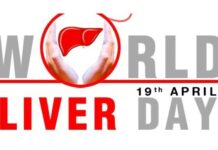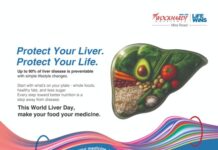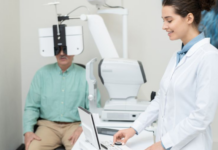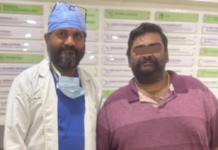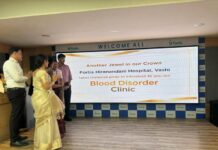World Lymphoma Awareness Day 15th September 2020
Dr. T. Narender Kumar Thota
Consultant Medical Oncologist, Hemato-Oncologist
And Stem Cell/Bone Marrow Transplant Specialist
KIMS Hospitals, Sec-bad
New Delhi, September 15, 2020: Lymphoma is different from leukemia. Each of these cancers starts in a different type of cell.
- Lymphoma starts in infection-fighting lymphocytes in the glands
- Leukemia starts in blood-forming cells inside bone marrow.
How a lymphoma patient present
Signs and symptoms of lymphoma may include:
- Unexplained fever
- Swelling of one or more lymph glands such as in the neck or armpits
- Swollen abdomen
- Abnormal sweating, especially at night
- Tiredness
- Loss of appetite
- Bruising or bleeding easily
- Weight loss
- Frequent infections
- Cough, chest pain or problems breathing
- Rash or itching.
Who are at risk of lymphoma?
- Are in your 60s or older for non-Hodgkin lymphoma
- Are between 15 and 40 or older than 55 for Hodgkin lymphoma
- Are male, although certain subtypes may be more common in females
- Have a weak immune system from HIV/AIDS, an organ transplant, or because you were born with an immune disease
- Have an immune system disease such as rheumatoid arthritis, Sjögren’s syndrome, lupus, or celiac disease
- Have been infected with a virus such as Epstein-Barr, hepatitis C, or human T-cell leukemia/lymphoma (HTLV-1)
- Have a close relative who had lymphoma
- Were exposed to benzene or chemicals that kill bugs and weeds
- Were treated for Hodgkin or non-Hodgkin lymphoma in the past
- Were treated for cancer with radiation
How a lymphoma patient is investigated
- Blood tests
Blood tests are taken regularly if you are diagnosed with lymphoma, to check on how the cancer or its treatment is affecting blood cells in your body.
- Gland biopsy
Biopsy of the lymph nodes to confirm a diagnosis of lymphoma.
- Bone marrow biopsy
Bone marrow biopsy to check whether there are cancer cells have spread to the bone marrow.
- PET scan
PET (positron emission tomography) scan which produces a three-dimensional colour image to show whether the lymphoma has spread to the bone marrow.
- MRI scan
MRI (magnetic resonance imaging) scan may be used to check the brain and spinal cord.
Treatment
The treatment you get depends on what type of lymphoma you have and its stage.
The main treatments for non-Hodgkin lymphoma are:
- Chemotherapy, which uses drugs to kill cancer cells
- Radiation therapy, which uses high-energy rays to destroy cancer cells
- Immunotherapy, which uses your body’s immune system to attack cancer cells
- Targeted therapy that targets aspects of lymphoma cells to curb their growth
- What are the recent advances in lymphoma treatment?
All the new treatment or latest advances are in recurrent and relapsed lymphoma Immunotherapy
- Adoptive cellular therapy
Adoptive cellular therapy is a form of immunotherapy that involves ex vivo manipulation of autologous T cells followed by reinfusion which produces an immune-mediated tumor response.
- CAR T cell therapy
CAR T cell therapies are engineered from autologous (self) T cells by genetic modification to express a CAR that consists of a transmembrane protein with an extracellular antigen recognition domain to identify cancer cells, a transmembrane hinge, and an intracellular signaling domain for T cell activation.
The autologous T cells from a patient are modified to express the chimeric protein, expanded in vivo, and reinfused into the patient.
CAR T cells can recognize the tumor antigen and activate T cells leading to tumor cell death.
Recently, the U.S. FDA approved CAR T cell therapies targeting CD-19 as the tumor antigen:
- Tisagenlecleucel for recurrent pediatric acute lymphoblastic leukemia (ALL) and r/r large B cell lymphoma and
- Axicabtagene ciloleucel for r/r large B cell lymphoma
- Lisocabtagene maraleucel is another CAR T cell product targeting the CD-19 antigen
Bispecific CAR T cells
Relapses and resistance to CAR T cell therapy may be secondary to antigen escape and low level of antigen expression in CD-19 positive and CD-22 positive tumors
Bispecific T cell antibodies
Blinatumomab is a T cell-engaging bispecific (TCB) antibody which simultaneously links CD-3 and CD-19 antigen
Immunotherapy
- Nivolumab
- Pembrolizumab
Small molecule inhibitors
- BTK Inhibitors
- PI3K inhibitor
What if lymphoma comeback after treatment?
If these treatments don’t work, patients can be offered a stem cell transplant. First, you’ll get very high doses of chemotherapy or use the latest medicine available to bring the disease under control This treatment kills cancer cells, but it also destroys stem cells in your bone marrow that make new blood cells. After chemotherapy, you will get a transplant of stem cells to replace the ones that were destroyed.
Two types of stem cell transplants can be done:
- An autologous transplant uses your own stem cells.
- An allogeneic transplant uses stem cells taken from a donor.
Corporate Comm India(CCI Newswire)




